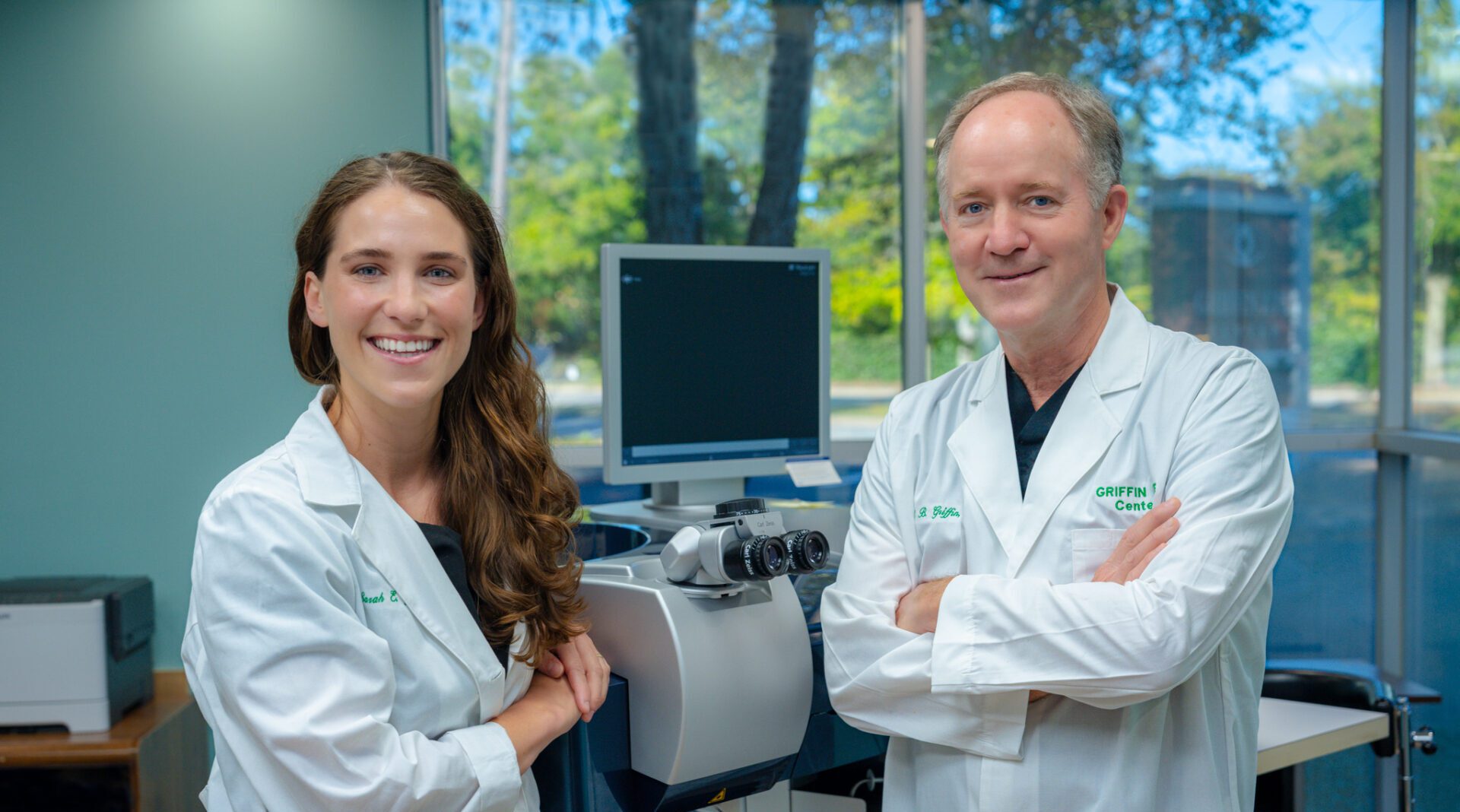High visual acuity is necessary to target the landing on the fairway, line up the shot, and hit the ball. Here are a few of the ways eyes and vision work to support a great golf game:
Eye-hand coordination: The ability to absorb the relevant visual information (distance, direction, elevation, conditions, topography, etc.) and use that information to control the amount and timing of body movement. The golf swing – teeing off, hitting a fairway wood, pitching, or putting – incorporates a lot of visual information to guide what the body is supposed to do: aiming, initiating the downswing, connecting the club head with the ball (ideally with the face square and hitting the sweet spot), following through on the swing and sending the ball accurately to the target.
Visual fixation: Keeping your eye on the golf ball. It allows you to focus your eyes onto a still or moving target – like a small white ball at any given distance. Visual fixation helps to see the golf ball (or find it in the rough).
Tracking: This is a bit different than fixation. Once the ball has been hit, eye tracking allows you to maintain focus on the ball in motion, while it flies to the target.
Eye Dominance: Golfers understand which eye they rely on more for aiming – a.k.a. the dominant eye. Whether it is positioning yourself over the ball to line up a put or aligning an iron clubface to send the ball to the landing target.
Depth perception: Your eyes quickly and accurately judge the distance and speed of objects – important for club selection and figuring out if it is worth it to walk up to the green or grab a ride on the cart.
All these skills rely on one factor: clear vision. Without clear vision, the information coming into the brain is…well…fuzzy which can lead to bad decision making and poor shot execution. Not ideal for your handicap. If golf is your game and glasses and/or contact lenses are not helping you see the golf ball and make the most of your time on the course, perhaps it is time for a conversation with your eye doctor about vision correction options.
You may have cataracts, which makes it harder to see the things around you, including golf balls and the hole you want to get the ball in. Cataracts usually start to impair your vision after age sixty.
The good news? If you have cataracts, having cataract surgery removes the natural lens that becomes cloudy and replaces it with an artificial lens, called an intraocular lens, or IOL. If you had standard cataract surgery you may be a candidate for LASIK .

LASIK has helped many golfers see the ball clearly. The FDA has approved LASIK eye surgery for those 18 years and older, but most providers will encourage patients to wait until after their prescription has stabilized.
SEE why so many chose Griffin Eye Centers Leading cataract and LASIK surgeons, Neil B. Griffin, M.D., and Sarah E. Griffin, M.D., for Laser Vision Correction. Griffin Eye Center has been helping patients for over 25 years and understands no two eyes are alike. Our practice is the only center in the local region who offers Laser Vision Correction with a state-of-the-art on-site LASIK suite. Why Wait? Find out if you are a candidate for LASIK and fill out a LASIK Questionnaire or visit our website to find out more about Advanced Cataract Surgery.
“Dr. Griffin and his whole team from nurses to office staff provided me with excellent care. Dr. Griffin has restored my vision so now I will be able to see the ball flight of my own golf shots. Thank you so much Dr. Griffin and staff.”- Robert S.
Learn more about LASIK and other laser vision correction options. Also visit the American Refractive Surgery Council: https://americanrefractivesurgerycouncil.org/blog/
